In this section, we present our picks for the 20 greatest books for kids ages 12 and up. It’s part of our series on the 100 Best Children’s Books of All Time.
Age 12+
20. The Westing Game
Age: 12+
Written by: Ellen Raskin

This Newbery Medal winning novel, published in 1979 turns the juvenile mystery genre on its head. The Boxcar Children, Hardy Boys, and Nate the Great type mystery novels for younger readers make use of a basic tried and true formula. This formula is great for younger readers because even if the subject of the book might be a little scary, they are granted security by the subconscious knowledge of how things will turn out. The Westing Game, on the other hand, turns this formula on its head, and uses it as a red herring to provide readers with a fresh feeling story that delivers the unexpected. The Westing Game is a great story for bridging the gap between mystery novels targeted at younger audiences, and adult classics like Sherlock Holmes.
19. A Tree Grows in Brooklyn
Age: 12+
Written by: Betty Smith

This novel follows the story of an immigrant family living in Brooklyn between 1900 and 1920. The novel is broken up into five “books” which jump around to different times in the two decade span. The story follows the family, especially Francie as she strains to educate herself, and work toward a better life. The book is a celebration of the triumph of human will over circumstances. A Tree Grows in Brooklyn is the sort of story that helped build the meta-story of the American Dream.
18. To Kill a Mockingbird
Age: 12+
Written by: Harper Lee

This book may be a little mature in terms of content for 12 year olds. Though it deals with rape and racial inequality, the book tells its story warmly, through the experiences of Atticus Finch. To Kill a Mockingbird won a Pulitzer prize and is thought to be the most widely read novel in the United States that addresses racial inequality in so direct a manner. The book has had widespread impact both at home and abroad. In 2006 British librarians ranked To Kill a Mockingbird above The Bible on a list of the top books everybody should read before they die.
17. Mara, Daughter of the Nile
Age: 12+
Written by: Eloise Jarvis McGraw
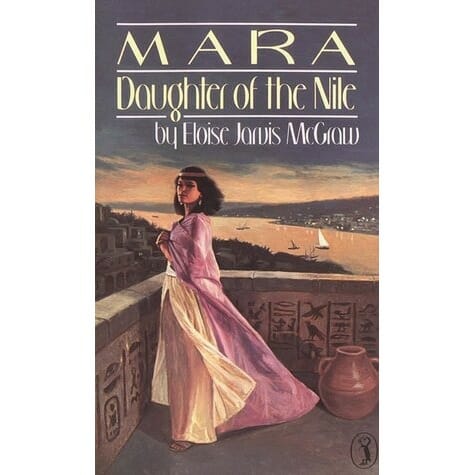
The title character and protagonist is a slave girl in ancient Egypt. Throughout the beginning of the book she changes hands, sold by a brutal master to a less brutal one. Eventually her skill with languages lands her an interpreter position in the Egyptian court. This position eventually leads to her getting caught up in court intrigue, during which she decides to play both sides to her advantage. This story is one of triumph over circumstance, Mara achieves great influence despite her position as a slave. This book is a glorious tour of ancient Egypt in all its beauty and brutality.
16. Seven Daughters and Seven Sons
Age: 12+
Written by: Barbara Cohen

This is a story about a girl named Buran who is the youngest of seven daughters. The story takes place in an ancient Arab nation. Having seven daughters and no sons in ancient times was quite a burden because marrying them all and affording the dowries was difficult. Buran, being the youngest daughter, was in a way, her father’s favorite. Her merchant father taught her Chess, and how to manage a business. Together they end up hatching a scheme out of desperation, where she will disguise herself as a boy, and go off to start a business. She does this, joining a caravan, and even starts making money before getting to her destination. Once she reaches the city, she starts small, and builds herself quite a business, at the age of only 11 or 12, befriending the prince and some other merchants along the way. The story is one of triumph over gender prejudice, but more so it is an ode to what can be accomplished with determination, human ingenuity, and an entrepreneurial spirit.
15. A Samurai’s Tale
Age: 12+
Written by: Erik C. Haugaard

Very few historical archetypes can capture a child’s imagination like the legendary samurai. In the west we don’t get a lot of Japanese literature translated into english (with the exception of graphic novels which tend to take great historical license). It’s rare for a western author to fully capture ancient Japan and the samurai culture but Haugaard definitely does in this adventure tale. In this book you experience life through the eyes of an orphan named Taro the father of whom had been a samurai. He is taken into the house of one of the conquering samurai and made a servant. He struggles to keep his identity and learn everything he can, eventually earning the right to pursue the path of samurai himself and do honor to his father’s legacy. Throughout the story we meet famous Japanese historical figures, and get a taste of their history.
14. Carry On, Mr. Bowditch
Age: 12+
Written by: Jean Lee Latham
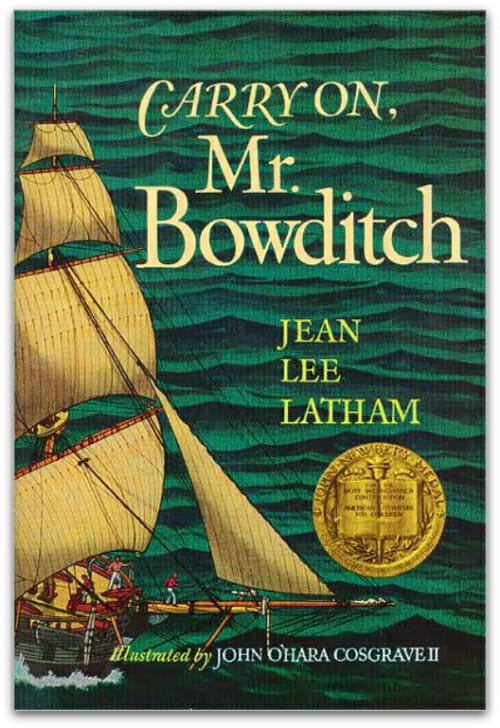
This is a historical biography of Nathaniel Bowditch aimed at children. Mr. Bowditch’s inspiring story champions learning and the power of curiosity. The book covers the coming of age of Nathaniel, whose dream was to attend Harvard. However he was forced to stop his schooling to help his father, and later he found himself apprenticed to a ship’s chandler. His apprenticeship contract was nine years but Nathaniel’s love of learning couldn’t wait so he used a local library to learn latin, and later mathematics. Eventually his indenture was complete and he went to sea where he had many adventures and applied mathematics to seafaring and navigation. The result of his self education and seafaring experience eventually resulted in him writing the definitive work on ocean navigation called The American Practical Navigator.
13. Ender’s Game
Age: 12+
Written by: Orson Scott Card

Ender’s Game is a novel that paved the way for modern children’s literature. This military science fiction novel centering a genetically engineered child named Ender Wiggin is a short, compelling story about the lengths people will go to ensure survival. Ender Wiggin is the culmination of a project by humanity designed to breed perfect military strategists in order to counter an alien threat that almost destroyed humanity generations before the book takes place. The novel follows Ender as he trains with other children selected for their strategy and combat capabilities. This book has received numerous accolades including: 32 on Amazon’s Best Books of the Millenium list, and a place on the Science Channel’s Ten Best Science Fiction Novels of All Time list.
11. The Book Thief
Age: 12+
Written by: Trudy White

In literature there are your classics, modern classics, and instant classics. Some books take a while to warm up and gain recognition, The Book Thief is not one of those books. It burst on the scene in 2005 winning multiple awards and stayed on the New York Times Bestseller list for over 230 weeks. This book released to a warm welcome from critics and has won seven prestigious awards. The book centers on a family living in Nazi Germany as World War II heats up, and is narrated by Death. The protagonist, Liesel, is steals books throughout the story, hence the title. The story follows Liesel as she loses friends and neighbors to camps and the horrors of war. It’s a deep work, touching, and it must be read.
10. Chronicles of Narnia
Age: 12+
Written by: C.S. Lewis
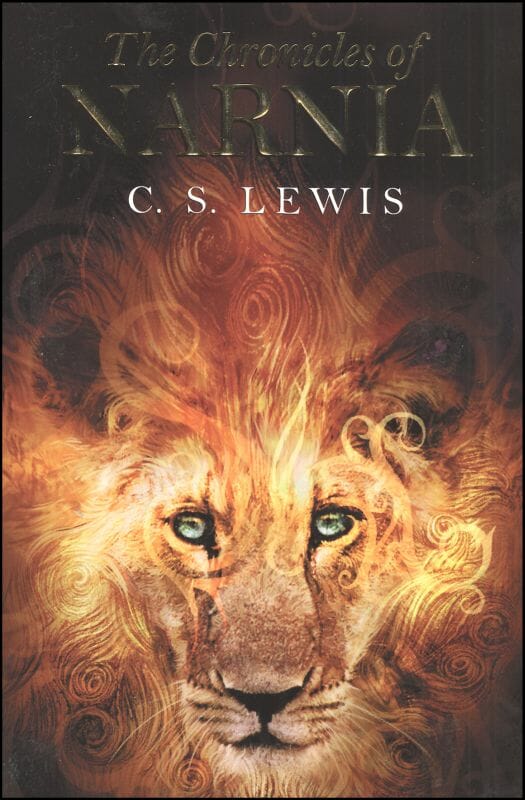
The first book of the series is The Lion, the Witch, and the Wardrobe. Children visiting family in the country to get out of London as it was being bombed during WWII discover an old magical wardrobe that transports them to the fantasy world of Narnia, where entire lifetimes can be lived and only a few moments will have passed in the real world. People view Narnia as many things, the escapism of a great book, a religious allegory, and just a grand place to tell a story are among them. One thing is certain, these books are classic children’s fantasy. C.S. Lewis laid the groundwork for many who followed in his footsteps. One of the most notable authors inspired by Lewis was J.K. Rowling, whose Harry Potter series is told in seven novels, partly as an homage to the seven books in the Chronicles of Narnia series. These books are fantastic, and each is a very different experience than the last.
9. The Hobbit, or, There and Back Again
Age: 12+
Written by:J.R.R. Tolkien

The Hobbit is an incredibly influential book that helped shape children’s fantasy as much as The Chronicles of Narnia. Tolkien and Lewis were not only contemporaries, but very good friends and for both of them to create such influential works of children’s literature is impressive. Even more interesting is how incredibly different their styles were, as there are almost no similarities between the two stories at all. In “The Hobbit” a respectable Hobbit named Bilbo Baggins is recruited by a wizard to help some dwarves retake their homeland, a mountain that had been taken over by a dragon. He reluctantly agrees. Adventure, personal growth, and battles ensue. This is a great introduction to the high fantasy genre.
8. Around the World in Eighty Days
Age: 12+
Written by: Jules Verne

Around the World in Eighty Days was written in 1873 and epitomizes the classic adventure novel. It begins with a proposition, Phileas Fogg, a London gentleman, claims he can circumnavigate the globe. His friends at the Reform Club beg to differ, and bet him £20,000 he couldn’t achieve this feat. Thus the story begins, and the rest of the story features him and his french valet Passepartout having numerous incredible adventures as they attempt to speedily circmnavigate the globe. Around the World in Eighty Days is one of the most acclaimed works of one of history’s greatest writers.
7. Roll of Thunder, Hear My Cry
Age: 12+
Written by: Mildred D. Taylor

This work of historical fiction addresses the issue of racism in the south from the perspective of the Averys, a black american family living in Mississippi around the 1920s. Because the story is told from the perspective of a child it doesn’t just comment on the racism and other difficulties faced by black americans in the 1920s south. It shows what it was like to grow up in those conditions. The beautiful thing about this book is that not everything is horrible all the time. It shows the wonderful family and black community that existed, but also the effects of racism and oppression on that community. It’s a story full of both tender, and horrific moments.
6. The Giver
Age: 12+
Written by: Lois Lowry
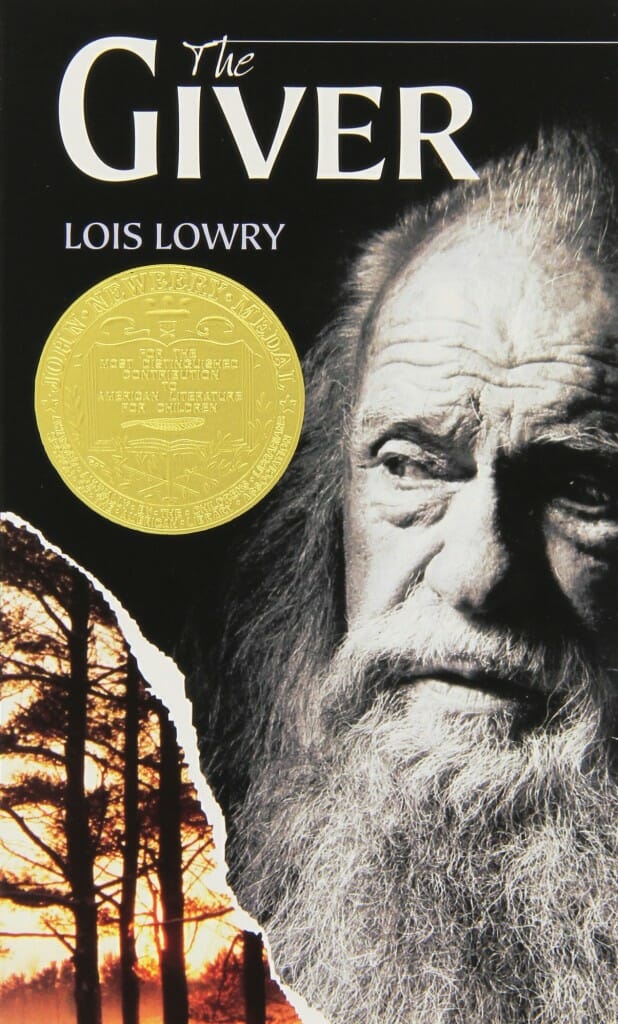
The Giver is different than many dystopian novels because its beginning is not as heavy handed as many. The book actually starts out presenting a utopian society, or one that looks utopian. Only as the book progresses does the dystopian side emerge. The world of The Giver is a world that values sameness. So there is no color, memory, or many other things that make locations and people unique, there is just sameness. Things spiral downward quickly when Jonas, the main character, begins to see the society for what it really is. Overall The Giver is one of the first dystopian novels targeted primarily at the childrens literature market. Published in 1993, it won a Newbery Award and has since received many recognitions for its excellence. Recently, in 2014 it was adapted for release as a major motion picture.
5. Are You There God? It’s Me, Margaret
Age: 12+
Written by: Judy Blume

This coming of age story deals with issues of womanhood, particularly the onset of puberty and its effects on the protagonist Margaret. However, the physical nature of developing womanhood is only part of the picture painted by this work. Margaret is the daughter of a Christian mother and Jewish father, and part of her journey into adulthood is questioning the existence of God, and which God might be the one that truly exists. Many people have advocated against this book being available to preteens because it deals with difficult content like emerging sexuality. However others have said that the book deals with these issues realistically and doesn’t expose children to anything more than they will likely encounter in their own personal experience. Literature is about pushing boundaries and talking about things that can be difficult to talk about, and that’s what ultimately led me to include “Are You There God? It’s Me, Margaret” on this list.
4. The Adventures of Huckleberry Finn
Age: 12+
Written by: Mark Twain

Some writers win awards from critics. Mark Twain is what we might call a writer’s writer. Which is to say that in addition to any critical recognition, numerous writers since. Mark Twain received praise from writers such as T.S. Eliot, Ernest Hemingway, and F. Scott Fitzgerald. Hemingway said of The Adventures of Huckleberry Finn “All modern American literature comes from one book by Mark Twain called Huckleberry Finn… it’s the best book we’ve had. There was nothing before, there has been nothing as good since.” That’s high praise from a writer that was known to rarely compliment the writing of others. Huckleberry Finn is an incredible adventure book, and the Great American Novel, and it’s accessible to young and old alike.
3. The Diary of Anne Frank
Age: 12+
Written by: Anne Frank

There is plenty of literature out there dealing with WWII. What’s rare, however, is a first hand account, written by a Jewish person in hiding for two years. The Diary of Anne Frank is a unique glimpse at Nazi occupation through the eyes of a young girl. Small touches capture the times. Like the fact that Anne Frank changed the names of people hiding with her and complicit in their hiding so her diary hopefully wouldn’t incriminate anybody if it were found. The ending, too, is unlike many books about WWII. Most books, especially those for children, one or two important people might die for the sake of realism. In this case, all die except Anne’s father, including Anne who died of Typhus in a concentration camp. The book is unflinching in its presentation of the circumstances of the Jewish people under nazi occupation and simply must be read.
2. Alice’s Adventures in Wonderland
Age: 12+
Written by: Lewis Carroll

This novel, by one of children’s literature’s heavyweights, though he didn’t write as much as many modern children’s lit authors. His two major works are Alice’s Adventures in Wonderland, and The Hunting of the Snark. Both are considered masterpieces but we chose the former based on its influence. Carroll bridges the gap between old fairy tales, which were often terrifying, and new fairy tales which are often quite whimsical, reaching their morals in less violent ways. Lewis Carroll was actually a pen name used by Charles Dodgson. Dodgson employed the pen name because he also wrote scholarly works on mathematics and and wanted to keep the two endeavours separate.
1. The Earthsea Cycle
Age: 12+
Written by: Ursula K. LeGuin
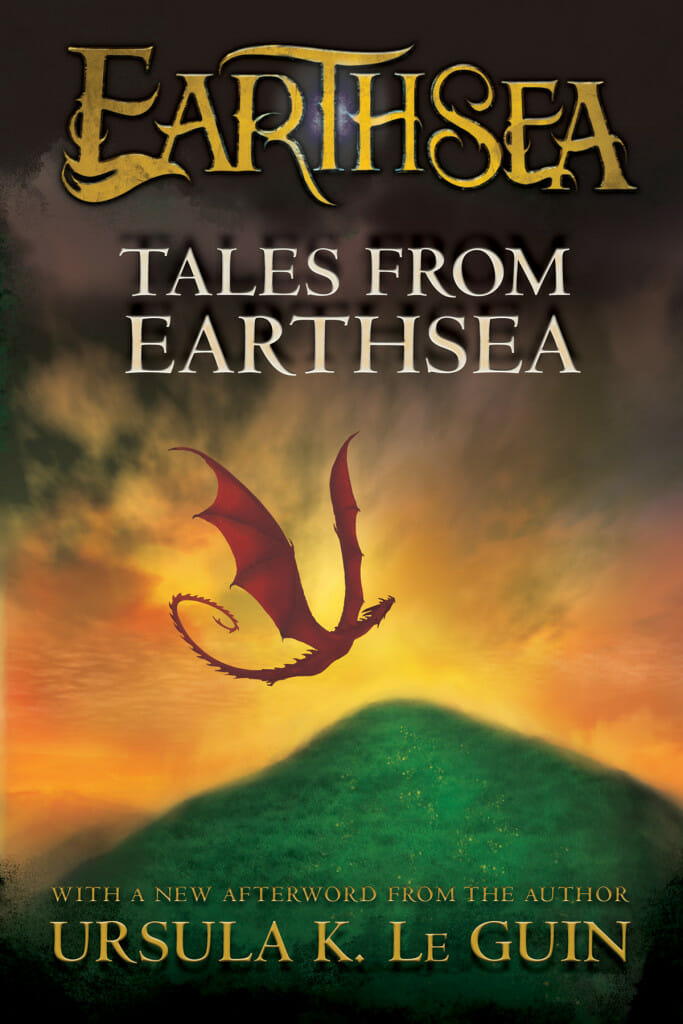
The Earthsea Cycle was one of the first high fantasy series to follow Tolkien’s The Hobbit and Lewis’ Chronicles of Narnia. In a time when Fantasy was not as well respected in the literary world, LeGuin wrote this series of incredible, enchanting high fantasy novels enjoyed by adults as much as children. LeGuin did receive a warm critical reception, the first book, “A Wizard of Earthsea” received a Lewis Carroll Shelf Award and the second book “The Tombs of Atuan” a Newbery Medal. LeGuin’s works have had a profound influence on both readers, and especially those readers that became fantasy authors themselves. Many name her as one of the great influences in the genre.
Previous: Top 100 Children’s Books of All Time – Ages 10-11
Back to the beginning: Top 100 Children’s Books of All Time